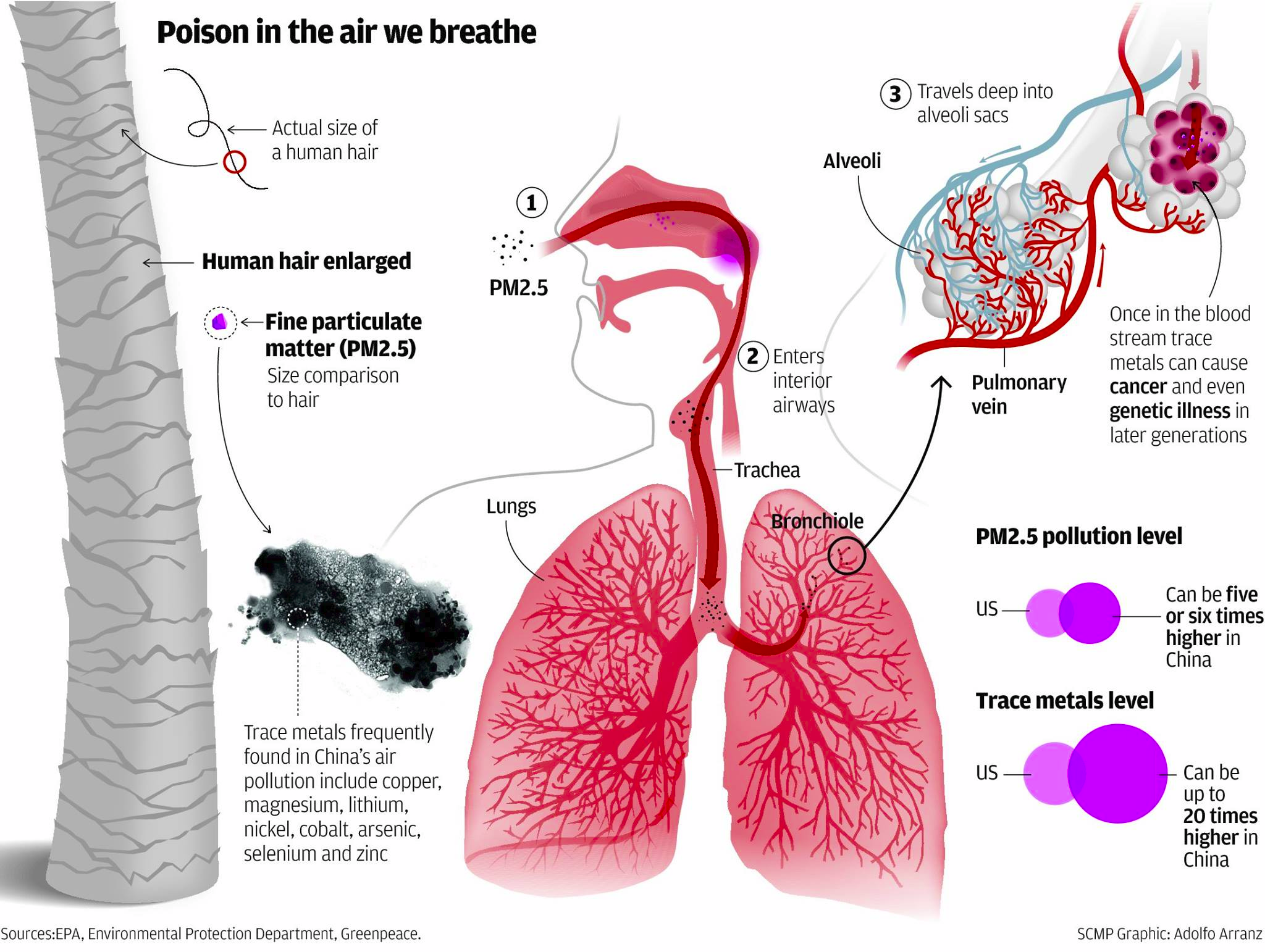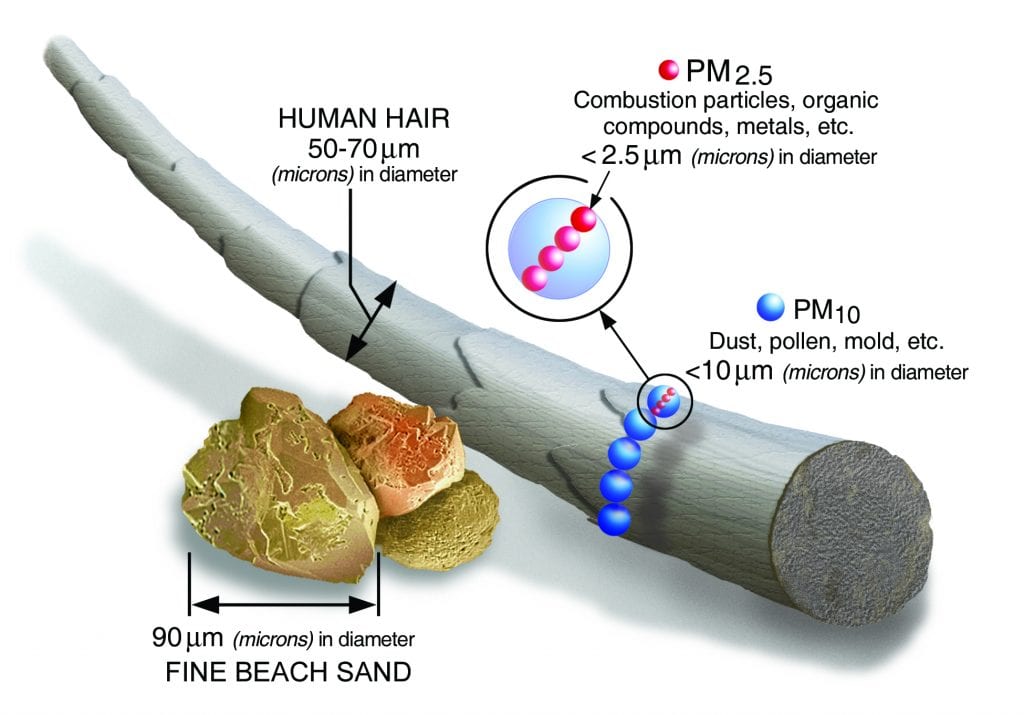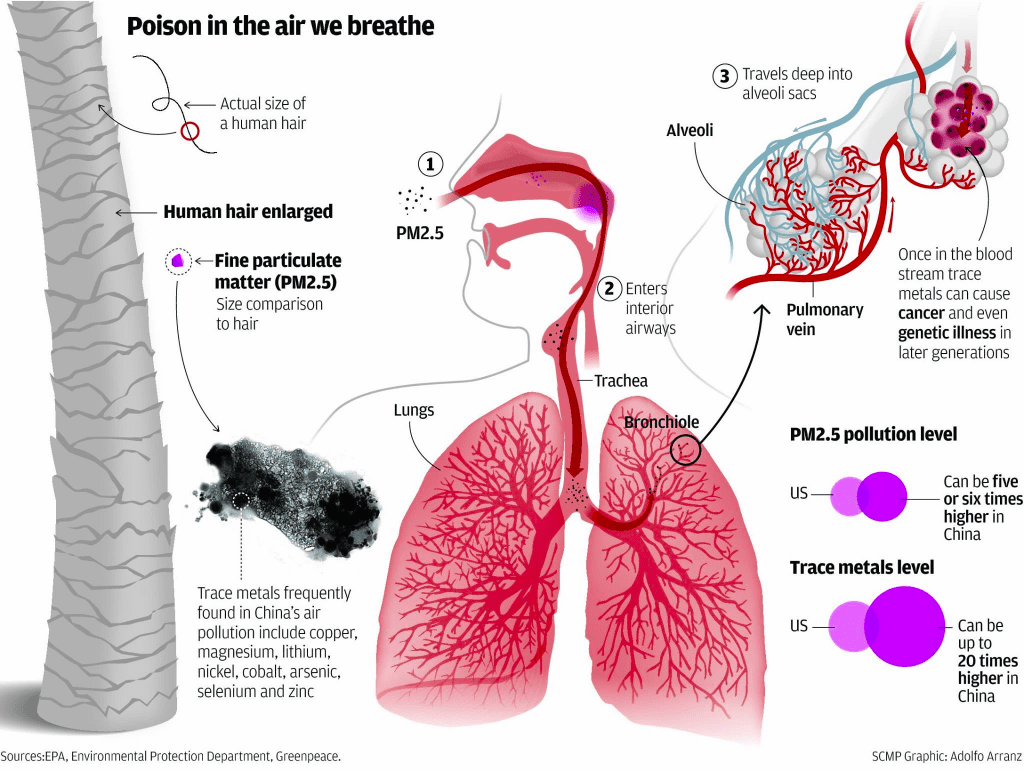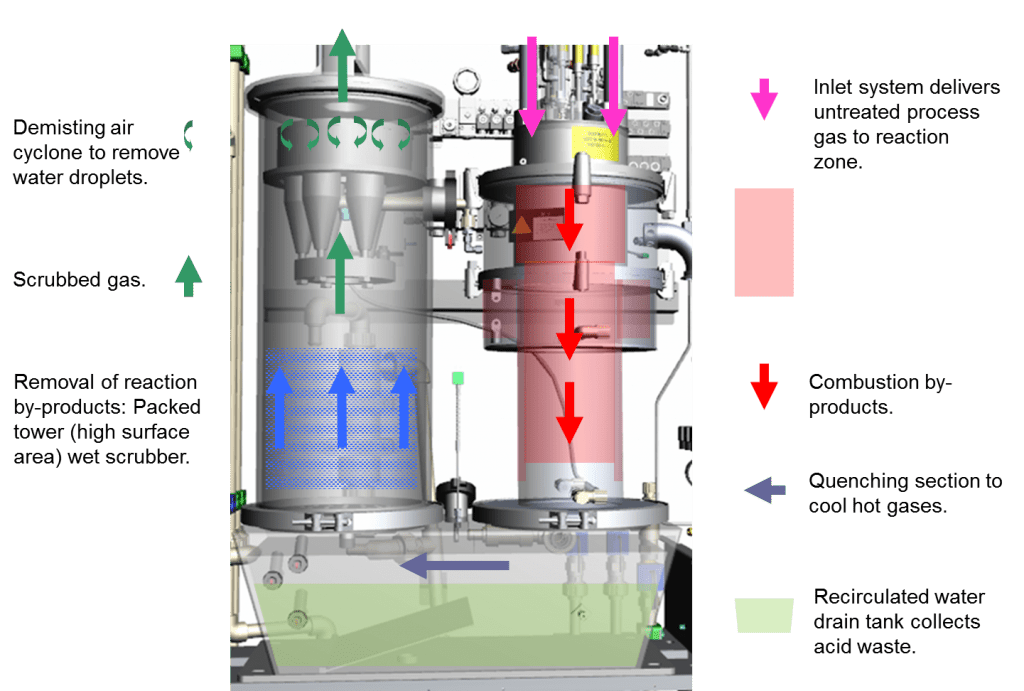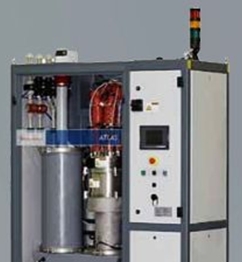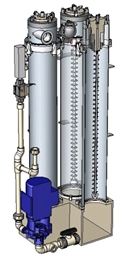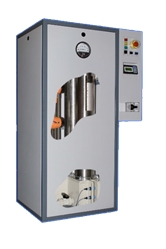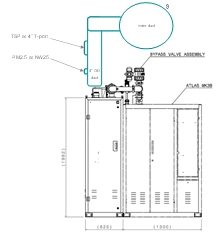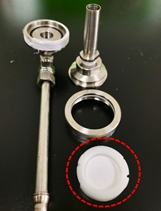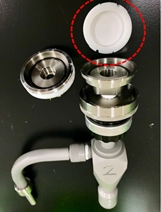TERRY CHANG and CHRIS JONES, Edwards Vacuum, Clevedon, North Somerset, UK, and SHOU-NAN LI, ITRI, Taipei, Taiwan
Particulate contamination is frequently created by semiconductor processes. Sometimes the equipment used to treat process gases from the manufacturing tool also creates particles. For example, the abatement of silane, which is used to deposit thin silicon films, creates fine particles of amorphous silicon dioxide. Particulate matter (PM) contamination can impact not only the operation of the fab, but also the health of both the employees and the public. PM can block ducts, leading to expensive downtime, and, if released into the fab during maintenance operations, can damage both manufacturing equipment and products. The health risks associated with the inhalation of fine particulate contaminants have led most governments to establish regulatory limits on their emission. Good control is essential to ensuring regulatory compliance, maximizing facility uptime, and minimizing health, safety, and environmental concerns. One challenge in the development of effective abatement solutions for fine particles has been the availability of a method to accurately measure equipment emissions.
Health risks
The health of employees in manufacturing facilities and people living near manufacturing operations is clearly a high priority. Epidemiological studies have provided plausible evidence that exposure to PM can impact health in a number of ways, including pulmonary and systemic inflammation, oxidative stress response, protein modification, stimulation of the autonomic nervous system, exaggerated allergic reactions, pro-coagulation activity, and suppression of immune response in the lungs.
Amorphous silica particles produced during the abatement of process gasses used in semiconductor manufacturing have much less impact on lung function than the crystalline silica particles more often encountered in the mining and building industries. However, the silica particles produced from the abatement of silane may have acids or other components adsorbed on the particle surface and constitute a substantially greater health risk than the pure oxide. Other particulate oxides associated with semiconductor production represent more serious health challenges, such as oxides of antimony, arsenic, barium, chromium, cobalt, nickel, phosphorus, tellurium, and selenium.
The health hazards associated with inhaling particles increase with decreasing particle size. Environmental scientists refer to particle size categories as PM 10, PM 2.5 and PM 1, meaning particles less than 10 µm, less than 2.5 µm and less than 1 µm, respectively. Suspended particles are potentially hazardous because they can enter the body through the airways and lungs (Figure 1). Small PM 2.5 and PM 1 particles can get into fine lung structures, leading to reduced lung function. Ultrafine PM 0.1 can penetrate even further and may lead to cancers and cardiovascular failure through inflammation.
Recognizing the danger posed by particulate contaminants, governments regulate their emission. Historically, emission limits have tended to become more stringent over time. Table 1 summarizes current ambient regulatory limits in Taiwan for total suspended particles (TSP), PM 10 and PM 2.5.
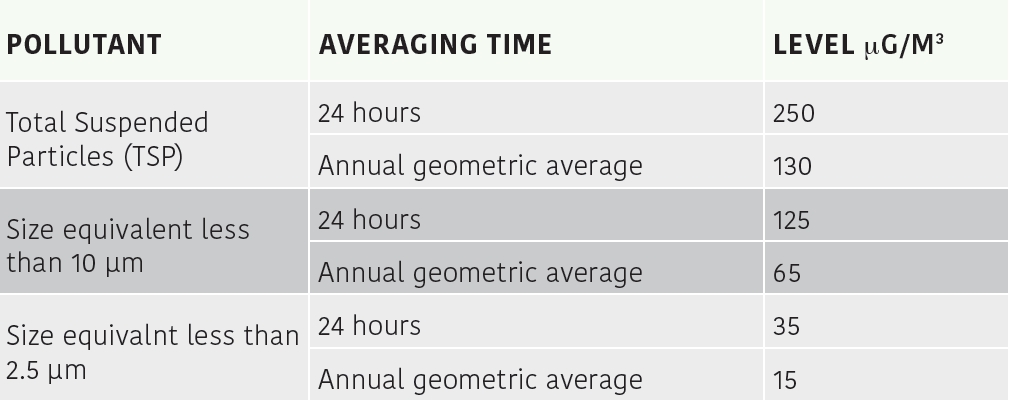
All particles are not created equal. Silicon dioxide is relatively non-toxic, but the abatement of other chemicals used in semiconductor manufacturing can generate more hazardous oxides. Environmental regulations are written to control exposure of the public outside the manufacturing facility by specifying permitted levels for the discharge of hazardous compounds from a facility stack. The height of the stack, the distance to the perimeter fence, and local conditions, such as wind speed and direction, all contribute to the dispersion and dilution of the contaminating material. Figure 2 summarizes typical limits on emissions of the oxides of various elements based on their toxicity. The information provided in Table 2 table is derived from Taiwanese legislation controlling the releases of chemicals from stationary sources. Some solid compounds of interest to the semiconductor industry are included in the table. The range of permitted concentrations results from adopting a single stack height (30m) but two stack to perimeter distances (50m and 130m).

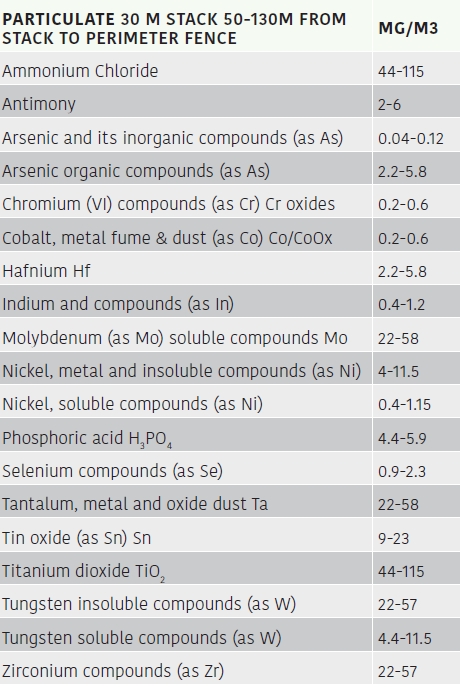
Process risks
Just as condensed material deposited in the vacuum lines can shut down the production process, the accumulation of combustion-generated particulates can degrade the performance of the whole facility. In a typical point-of-use (POU) abatement system, the exhaust gases pass through a series of operations designed to remove particulates and other by-products. Blockages can cause shutdowns that may last hours or days. In addition to blockages, failure to remove particulate at the primary abatement unit can also lead to environmental discharges and visible plumes at stacks.
Measuring particles
Accurate measurements of particulates are essential not only to ensure compliance with regulatory limits, but also to monitor emissions and develop effective abatement solutions at the equipment level. Small particles, PM 2.5 and less, can be challenging to measure accurately and repeatably. Any measurement technique used to monitor emission and improve performance at the system level must:
- Use methods that are internationally recognised
- Be portable enough to move easily from system to system
- Be easily installed in and compatible with the fab/sub-fab operating environment and able to test both point-of-use (POU) or end-of pipe (EOP) equipment
- Follow best practices for sampling – in duct sampling is best and any sample lines must be kept short
- Measure PM 2.5 and TSP
- Measure concentration, massflow, and composition
In recently published work, Shou-Nan Li and his colleagues at ITRI described a measurement methodology and tested its use in measuring particulate releases from an Edwards Atlas Helios (Figure 3) system for abating silane flows of 1, 0.5 and 0 slm. The Atlas uses an inward-fired combustion-based process to convert the flammable silane to amorphous silica. The nature of the products from combustion depend on the gas being abated. The resulting particulate can be either hydrophilic or hydrophobic. Particle sizes from tens of nanometers to tens of micrometers can be formed. Atlas systems include a water weir, quench, and packed-bed scrubber with atomizing sprays that effectively remove the larger PM from the abated gas. Alternative technologies are required for the effective removal of the smaller particulates.
For these tests, a wet electrostatic precipitator (WESP) was integrated with the Atlas (Figure 4). A WESP uses electrostatic forces to remove particles. The testing evaluated particle removal efficiency with and without the WESP turned on.
The development of appropriate sampling methods was a primary consideration in obtaining accurate particle measurements. Samples were taken either in or immediately adjacent to the exhaust duct just after it exited the system (Figure 5). Special nozzles were designed and flow rates carefully measured using tracer gas measurements to ensure that the sampling velocity was the same as the velocity of the gas in the duct. Appropriate filters and cyclones were used to measure TSP and PM 2.5 using sample holders designed to maintain sample integrity. TSP amd PM 2.5 measurements were made by weighing the filters before and after sampling. Particle composition can be determined by digesting the filters and analyzing the deposited particles with mass spectrometry or other analytical techniques.
Results
Previous tests had indicated that the Atlas alone removed approximately 60%-75% of solids, with the higher figure reflecting the performance after the implementation of atomizing sprays. These new tests showed that the addition of a WESP improved the system particle removal efficiency to ~99.9% at 1 slm (Table 3). At this this silane input, releases from the Atlas and WESP were ~2mg/m3. At 1 slm silane input, releases from the Atlas and WESP were ~2mg/m3. Under the same conditions, mass releases from the Atlas alone would be ~1.5 kg/d, but the addition of the WESP would reduce this to only 3-4 g/day. The agreement of the total suspended particulate and PM2.5 measurements indicated that the particles released were all no more than 2.5 µm in diameter while also providing confidence in the methodologies. Separate laboratory measurements with an electrical low-pressure impactor (ELPI) confirmed that the particles were nearly all less than 1 µm (Figure 6).


Conclusions
Particles, especially fine particles, are very important because of their effects on human health. The smaller the solids, the further the particulate can penetrate the human body, leading to a variety of impacts ranging from impaired lung function, to cancer, and heart disease. The health impacts vary with toxicity. We have developed and demonstrated a procedure based on internationally recognised methods to measure both PM2.5 and TSP with portable equipment that can be readily installed in a semiconductor fab. Adding a WESP to the abatement system improves system particle removal efficiency to ~99.9%, when treating 1slm silane. Concentration releases were ~2 mg/m3 and mass release of only 3-4 g/d. Agreement between the PM2.5 and TSP measurements indicates that the particulates are all less than 2.5um. This is further confirmed by ELPI measurements that find almost all particles below 1 µm.
